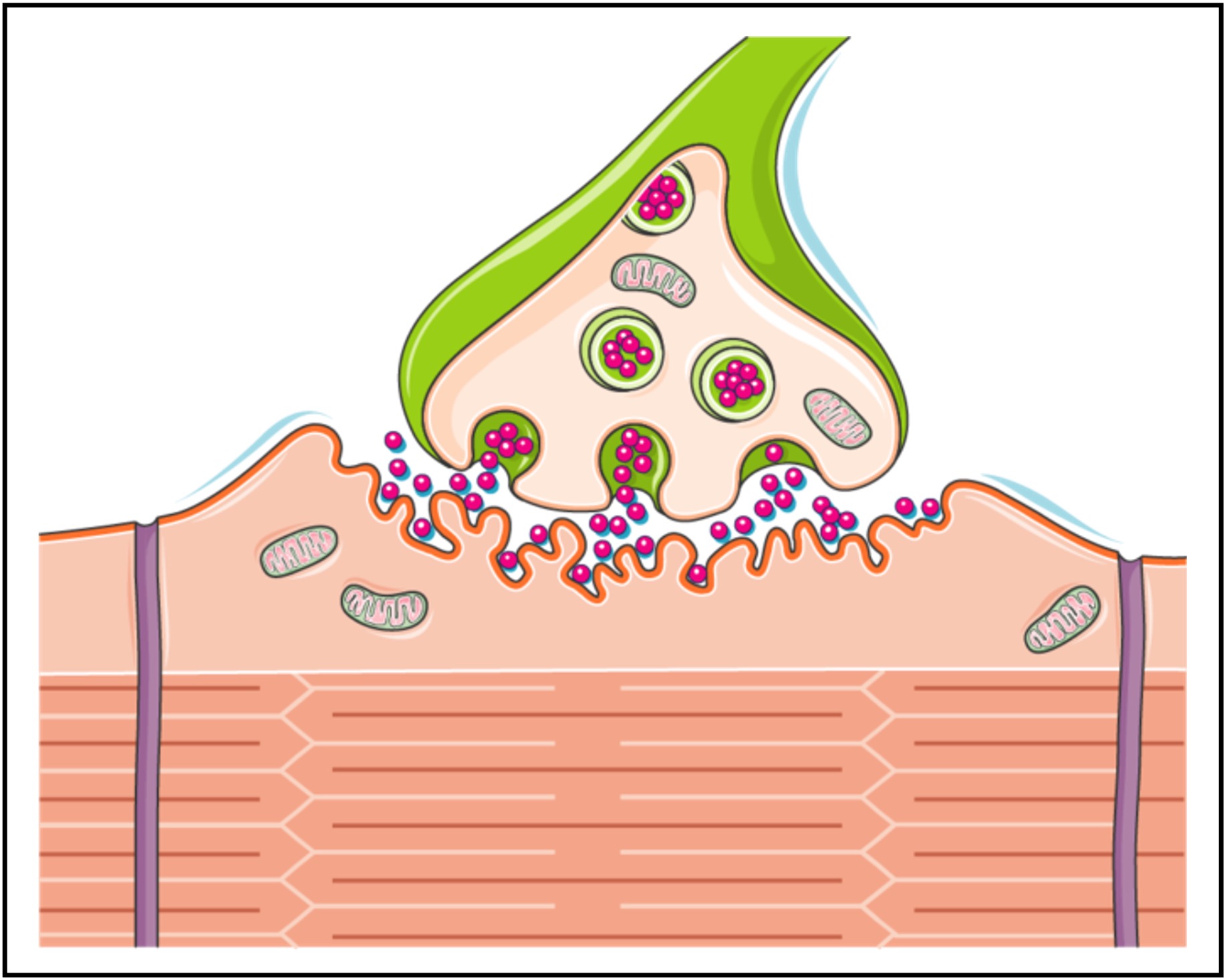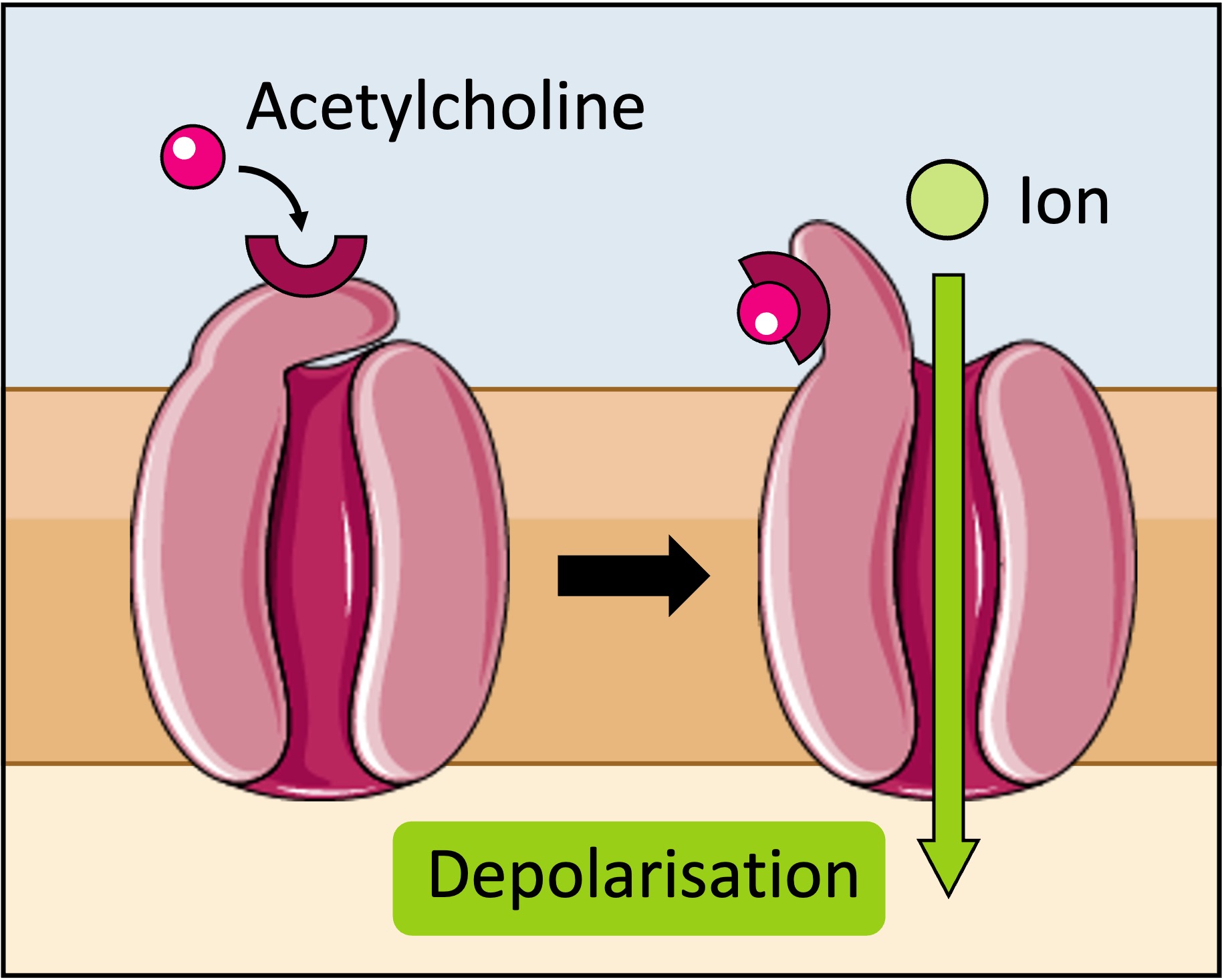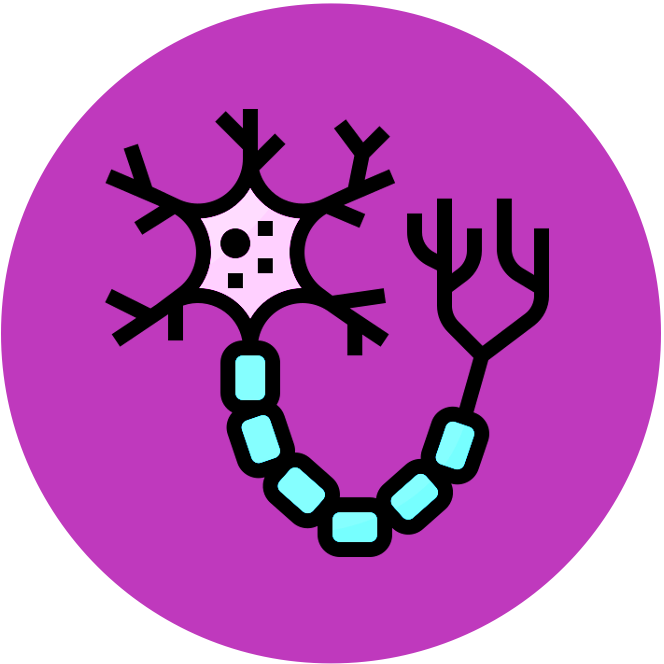

Neurotransmitters
Neurotransmitters are chemical messengers released from neurons and function to transmit signals across the synaptic cleft
-
Neurotransmitters are released in response to a change in the membrane potential at the axon terminal of a presynaptic neuron
-
Neurotransmitters bind to receptors on post-synaptic cells and trigger a response by causing a change in membrane potential
Neurotransmitters can trigger a variety of responses depending on the type of post-synaptic cell activated:
-
In neurons, they will trigger the propagation of an action potential in the next neuron (continuing the nerve impulse)
-
In muscles, they will trigger the contraction or relaxation of muscle tissue (i.e. stimulating movement)
-
In glands, they will trigger the release of chemicals (e.g. hormone release from endocrine gland cells)
Acetylcholine
One example of a neurotransmitter used by both the central nervous system and peripheral nervous system is acetylcholine
-
It is commonly released at neuromuscular junctions and binds to receptors on muscle fibres to trigger voluntary muscular contractions
-
It is also commonly released within the autonomic nervous system to promote parasympathetic responses (‘rest and digest’)
Acetylcholine is created in the axon terminal by combining choline with an acetyl group (derived from mitochondrial Acetyl CoA)
-
Acetylcholine is stored in vesicles within the axon terminal until released via exocytosis in response to a nerve impulse
-
Acetylcholine activates a post-synaptic cell by binding to one of two classes of specific receptor (nicotinic or muscarinic)
Acetylcholine must be continually removed from the synapse, as overstimulation can lead to fatal convulsions and paralysis
-
Acetylcholine is broken down into its two component parts by the synaptic enzyme acetylcholinesterase (AChE)
-
AChE is either released into the synapse from the presynaptic neuron or embedded on the membrane of the post-synaptic cell
-
The liberated choline is returned to the presynaptic neuron where it is coupled with another acetate to reform acetylcholine
Neurotransmitters

Neuromusclular Junction





